#andean textile art
Text
#Caturday:
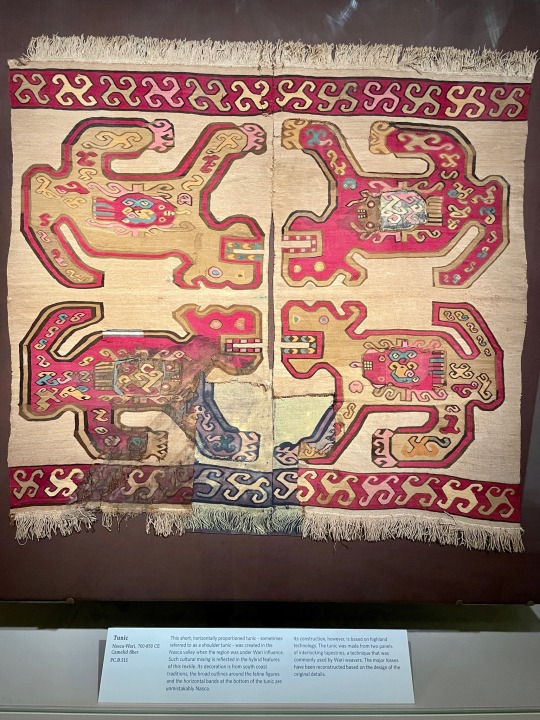
Tunic with four felines
Nasca-Wari, 700-850 CE, camelid fiber.
On display at Dumbarton Oaks’ “Clothing for the Afterlife,” an exhibition of burial textiles from the ancient Andes.
“This short, horizontally proportioned tunic - sometimes referred to as a shoulder tunic - was created in the Nasca valley when the region was under Wari influence. Such cultural mixing is reflected in the hybrid features of this textile. Its decoration is from south coast traditions; the broad outlines around the feline figures and the horizontal bands at the bottom of the tunic are unmistakably Nasca. Its construction, however, is based on highland technology. The tunic was made from two panels of interlocking tapestries, a technique that was commonly used by Wari weavers. The major losses have been reconstructed based on the design of the original details.”
#animals in art#Dumbarton Oaks#museum visit#exhibition#ancient art#Indigenous Art#Andean art#South American art#textiles#tunic#funerary art#burial art#felines#Caturday
24 notes
·
View notes
Photo

Lil’ Meow Meow in Ancient Peru! It just sits there and stares at you!
“ICONOGRAFÍA en la cultura PARACAS NECRÓPOLIS (200 a.C. - 200 d.C.)En general, los textiles precolombinos de Perú muestran una extraordinaria RIQUEZA ICONOGRAFÍCA que alcanza su sofisticada perfección a través de los textiles de la cultura Paracas Necrópolis.Por ejemplo, en este fragmento de tejido de la imagen se nos muestra a un curioso BUHO. Lleva agarradas dos pequeñas FIGURAS HUMANAS. Dentro de su ESTÓMAGO vemos un animal cuadrúpedo con un lomo con protuberancias de saurio y un vientre dentro del cual aparece la imagen de otro animal similar...La iconografía Paracas, independientemente del soporte en que se exprese, evoca temas cosmológicos, mitológicos y se refiere al mismo tiempo a relatos históricos como la conquista y la fundación de asentamientos humanos, de batallas y de celebraciones de ceremonias.Un mundo de ensoñación de una cultura indiscutiblemente admirable.”
(Source: Amantes de las Culturas del Antiguo Peru Facebook page)
#native american#native americans#textile#peru#peruvian#peruvian art#ancient peru#paracas#indigenous americans#ancient art#textile art#andean#mythical creatures#feline#cats#cat art#yellow cat#lil meow meow#eyes#big eyes#creepy stare#stare#staring#native american art#weaving#black cat#pyramid#iconography
18 notes
·
View notes
Text

Milena Warthon 🌬️🌠⛰️💜
#Andean women#indigenous andean women#makeup#beautiful women#being ndn is beautiful#andean pop#andean singer#andean folk singers#Huayno#Ancash#Indigenous to peru#Andean Textile#andean fashion#native women in art#native american#native south american#ndn tumblr#peruvian#brown peruvian#peruvian indigenous
10 notes
·
View notes
Text


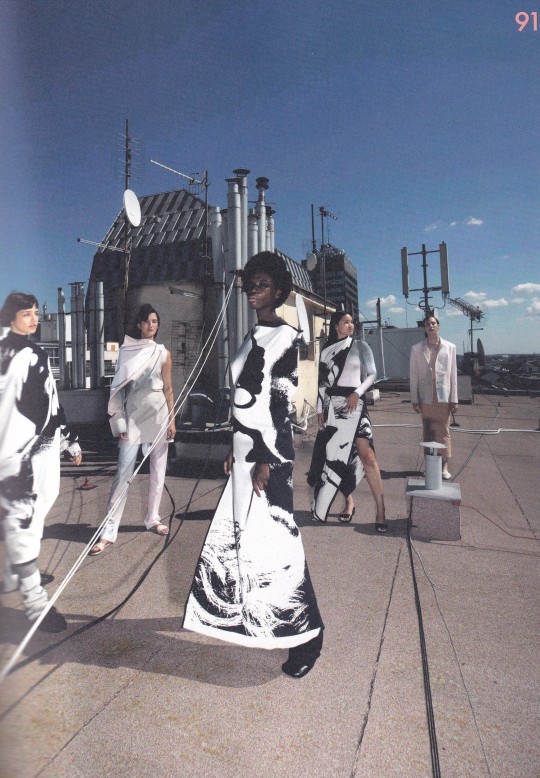


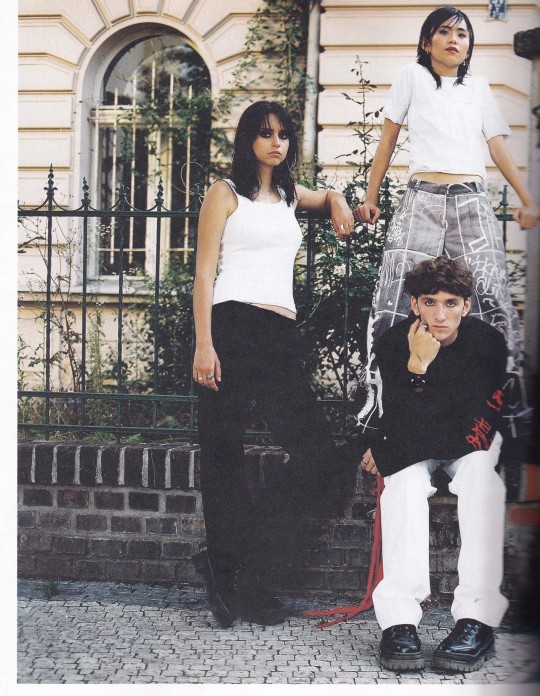

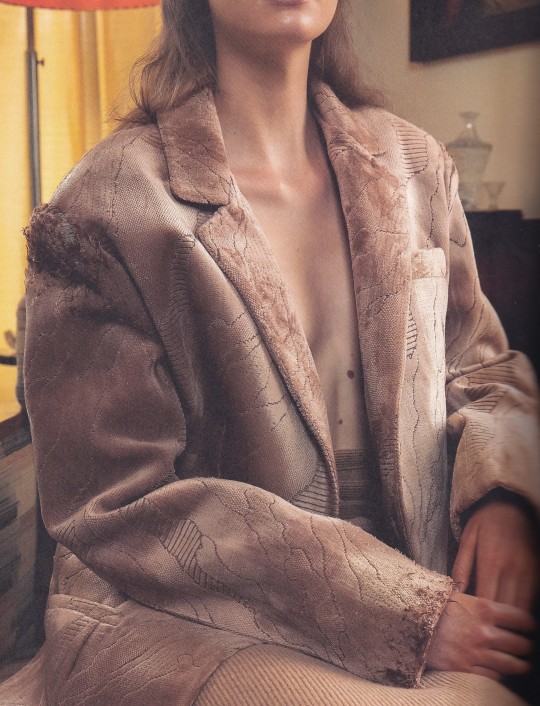
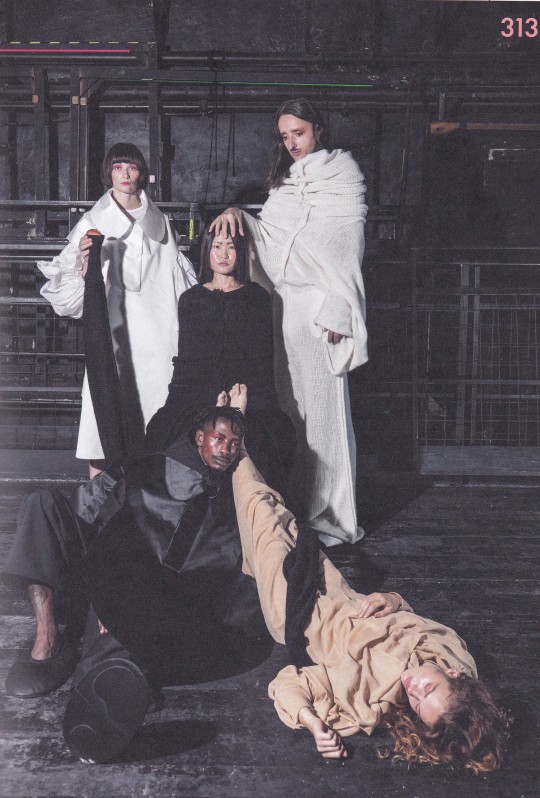




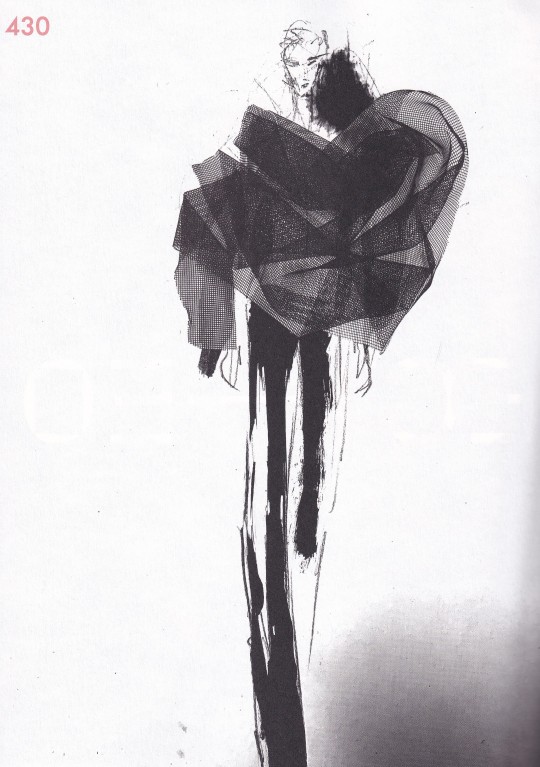

TEXTile Manifestoes
Pavel Liška, Robin R. Mudry, eds
UMPRUM, The Academy of Arts, Architecture and Design, Praha 2023, 456 pages, 21x27cm, ISBN 9788088308409
euro 75,00
email if you want to buy [email protected]
The TEXTile Manifestoes is an interdisciplinary anthology that assembles and interweaves questions related to textile art, fashion and textuality into broader political, sociological, philosophical, art history and historical frameworks thereby expanding their range of textural interconnections. The original project “TEXTile Manifestoes” emerged out of a cross-disciplinary collaboration between several studios at the Academy of Arts, Architecture and Design in Prague. Students from different disciplines worked together to weave textiles and discourses alike to design their manifestoes by combining fashion collections with burning contemporary issues such as mass surveillance, artificial intelligence or virtual reality but also to more private struggles of identity, memory and (mental) health. The students’ works were later complemented by and (re)contextualised with international contributions ranging from ancient Andean textile studies to neuropsychoanalysis or from literary and art criticism to aesthetics and musicology.
17/03/24
6 notes
·
View notes
Photo




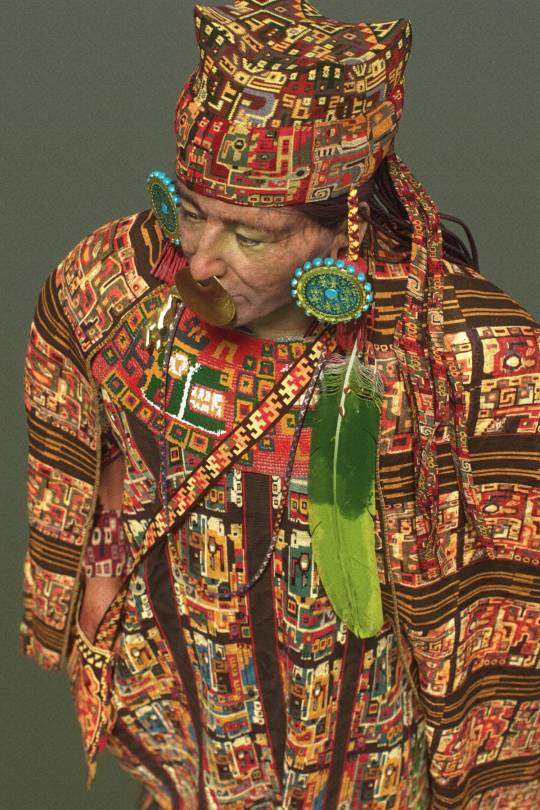
Wari (Peru) tunics are among the most elaborate textiles of ancient America. Traditionally, the thread used for textiles was spun from indigenous cotton plants, as well as alpaca and llama wool.
https://camayoc.artstation.com/projects/q9Pqwn
The Wari state, predecessor of the Inca, was the great state that laid the foundations for the emergence of the Inca culture, during this period of Andean history (600 after Christ-1000 after Christ) sophisticated arts were developed among which were the manufacture of upholstery fabrics stands out.
Tunics of great sumptuousness and a great standardization in their finish suggest that, as among the Incas, they were made under the auspices of the state and therefore used by rulers and the military.
Thinner than silk, Wari tunics reach astonishing densities which translates in modern terms into the higher resolution needed to render more detailed figures.
21 notes
·
View notes
Text
Caral-Supe (also known as Caral and Norte Chico) was a complex pre-Columbian-era society that included as many as thirty major population centers in what is now the Caral region of north-central coastal Peru. The civilization flourished between the fourth and second millennia BC, with the formation of the first city generally dated to around 3500 BC, at Huaricanga, in the Fortaleza area.[1] It is from 3100 BC onward that large-scale human settlement and communal construction become clearly apparent,[2] which lasted until a period of decline around 1800 BC.[3] Since the early twenty-first century, it has been established as the oldest-known civilization in the Americas, and as one of the six sites where civilisation separately originated in the ancient world.[4]
Complex society in Caral-Supe arose a millennium after Sumer in Mesopotamia, was contemporaneous with the Egyptian pyramids, and predated the Mesoamerican Olmec by nearly two millennia.
In archaeological nomenclature, Caral-Supe is a pre-ceramic culture of the pre-Columbian Late Archaic; it completely lacked ceramics and no evidence of visual art has survived. The most impressive achievement of the civilization was its monumental architecture, including large earthwork platform mounds and sunken circular plazas. Archaeological evidence suggests use of textile technology and, possibly, the worship of common deity symbols, both of which recur in pre-Columbian Andean cultures. Sophisticated government is presumed to have been required to manage the ancient Caral. Questions remain over its organization, particularly the influence of food resources on politics.
The use of cotton (of the species Gossypium barbadense) played an important economic role in the relationship between the inland and the coastal settlements in this area of Peru. Nevertheless, scholars are still divided over the exact chronology of these developments.[1][13]
Although not edible, cotton was the most important product of irrigation in the Caral-Supe culture, vital to the production of fishing nets (that in turn provided maritime resources) as well as to textiles and textile technology. Haas notes that "control over cotton allows a ruling elite to provide the benefit of cloth for clothing, bags, wraps, and adornment".[13] He is willing to admit to a mutual dependency dilemma: "The prehistoric residents of the Norte Chico needed the fish resources for their protein and the fishermen needed the cotton to make the nets to catch the fish."[13] Thus, identifying cotton as a vital resource produced in the inland does not by itself resolve the issue of whether the inland centers were a progenitor for those on the coast, or vice versa. Moseley argues that successful maritime centers would have moved inland to find cotton.[1]
the ancient civilization in the andes was really old and kinda strange. unclear relationship between inland and coastal. possibly dependent on fishing
12 notes
·
View notes
Note
Hi @prophetic-hijinks !!! I need some tips about colombian fashion. You see I need a new design for Sonia's new dress & Need help choosing the right style of fashion during Encanto. Google & pintrest aren't really helping me. I've seen Elena's fashion & love it!!! May I get some tips?
Elena being a city girl means she can draw a lot of her designs From 1950s Hollywood. Some movies were coming translated to Colombian around that time. And if you look up nightlife Columbia 1950s you can see their fashion was not too out of kilter with the fashion of Americas. I purposely have Elena dressed in Garments that Rita Hayworth might have wore, because I modeled Elena after her. Also there seemed to be a large mercantile and fashion district in Bogota the capital city.
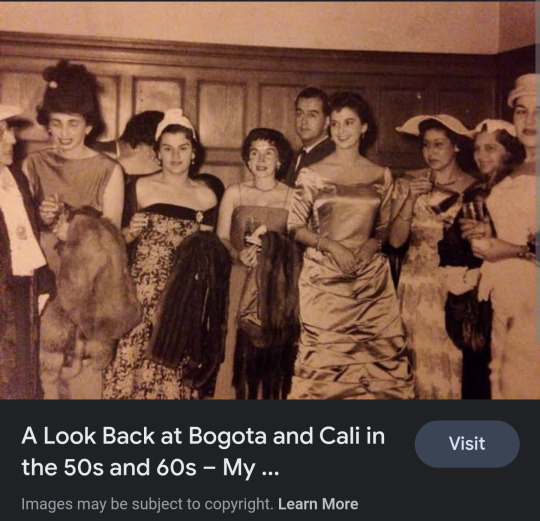
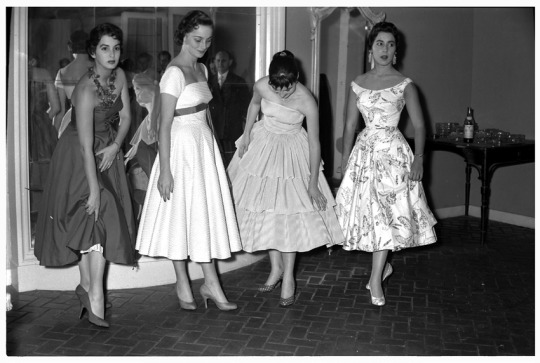
One thing I try to keep in mind with the 1950s fashion when I do borrow it is they're not appropriate in the Encanto. So Elena does adjust her fashion depending where she is. This is due to being a Catholic modest society so no slinky dresses outside of the city, or their bedroom. She will wear her pants in the Encanto, which is fairly risque.
Another details the fabrics. Within the Encanto you're going to have cotton, or wool like fabrics. A bit heavier with stronger folds and embroidery details. Which kind of gives it a structured look and if. This is because they're making fabrics from hand woven techniques. Pepa's dress is like a cotton, while julieta's appears to be maybe wool, but not woven. Looks almost Wool felted, but I am open to correction.
But Elena has the benefit of access to new textile technology of elastics, mix fabrics like polyester's. That gives her a little bit more of a stretch to her fabric, so they could be a bit more curve hugging. Unless you have a very structured look like, say Alma's dressed where you can see the lines as it goes around each part of the body.
For your redesign, it comes down to whether or not you're Encanto is open to the world. And how much money you have. Isabella's dress those are hand embroidered details and handmade flowers that is insanely expensive. And not so easily purchased. This expense is why we may see Pepa's wedding dress dyed to be colorful (or it's too save on models, but that was by no means an uncommon practice)
But Augustin proves that different people from different regions of Colombia have put their mark on the town. Perhaps Sonia has some luck and comes across some very nice silk kind of fabric.
The art of Encanto goes into more detail of where the Encanto draws their inspiration from (I believe the Andean coffee region) but there are details from all over Colombia. They also have a concept where Mirabel went to the city, so you can see the artists interpretation of city fashion of the era.
https://disney-studios-awards.s3.amazonaws.com/encanto/books/flipJSi56TV4ke/index.html
In the end I am not much a historian, but I tried my best to learn. But I have made Elena a bit of a fashion forward, Hollywood cinema nerd.
17 notes
·
View notes
Text
Unraveling Centuries of History and Culture of the Andean Odyssey

A rich tapestry woven through millennia, the history of the Andean region of South America took place from the Preceramic period to the Spanish conquest in 1534. Archaeologists such as John H. Rowe and Edward Lanning have meticulously mapped the cultural development of Peruvian civilizations, dividing them into periods and horizons based on ceramic styles and radiocarbon dates.
The journey began in the Preceramic Period (before 9500 BC), pronounced by the earliest evidence of human occupation in Peru, and this period, marked by the absence of pottery, witnessed the gradual evolution of stone-based technologies among hunter-gatherers in the highlands and coastal regions. The transition to ceramic use began in subsequent periods, each characterized by unique cultural traditions and technological advancements.
In the Preceramic Periods I to VI, distinct cultural traditions, monumental architectural structures, population growth, and widespread textile production developed. The development of agriculture and domestication of plants during this time laid the foundation for more complex societies in the Andes. Notable sites such as Quebrada Jaguay, Chivateros, Lauricocha, and Caral Supe/Norte Chico exemplify the diversity and sophistication of Andean cultures in these preceramic phases. While the Quebrada Jaguay illustrates the use of marine and plant resources, the Chivateros showcases the use of stone tools. Lauricocha represents early agricultural activities in the region, whereas the Caral Supe/Norte Chico demonstrates social organization and urban planning.
Subsequent historical periods, from the Initial Period to the Late Horizon, further illustrate the dynamic evolution of Andean societies. The introduction of pottery in the Initial Period (1800-900 BCE) marks a turning point, leading to new settlements along coastal valleys. The Early Horizon saw the rise of Chavín de Huantar, a site in the northern highlands that influenced the spread of the Chavín culture and its artistic motifs. Some consider the Chavín culture the earliest complex culture with intricate art, iconography, and religious rituals.
As time progressed into the Early Intermediate Period (200 BCE-600 CE), more cultures such as the Moche, Gallinazo, Lima, and Nazca emerged, each contributing to the cultural mosaic of the Andean landscape. The Middle Horizon (600-1000 CE) witnessed environmental changes that shaped the region's cultural and political dynamics. Changes in temperature and precipitation patterns influenced agricultural practices, affecting crop yields and food production.
The Late Intermediate Period (1000-1476 CE) featured the fragmentation of political entities, with independent polities governing different areas. Notable cultures during this period included the Chimú society on the north coast and the Chachapoya culture in the highlands. The Chimú utilized the rich coastal resources for sustenance as skilled agriculturalists and fishermen. They developed an extensive irrigation system for agriculture, allowing them to support a large population. The Chachapoya cultivated coca plants, which held ritual and medicinal significance. The exchange of coca leaves with other regional societies contributed to cultural connections.
The Late Horizon (1476-1534 CE) witnessed the rise of the Inca Empire, with sites such as Cuzco, Machu Picchu, and Ollantaytambo becoming symbols of Incan power and influence. The arrival of the Spanish in 1532 brought a seismic shift to Andean history. The conquest led to the region's colonization, with the imposition of new social, religious, and economic systems. The once-mighty Inca Empire crumbled, and the intricate stone structures of pre-Inca and Inca sites became the foundations for new colonial constructions.
Finally, the post-conquest era saw the integration of indigenous elites into the colonial administration, the introduction of a racialized caste system, and the devastating impact of new diseases. The modern era witnessed the rise of movements such as Indigenismo, which sought to valorize indigenous peoples and celebrate the achievements of ancient Andean civilizations. The rediscovery of Machu Picchu in 1911 and the efforts of Andean intellectuals such as José Carlos Mariátegui contributed to a renewed appreciation for Andean culture.
0 notes
Text




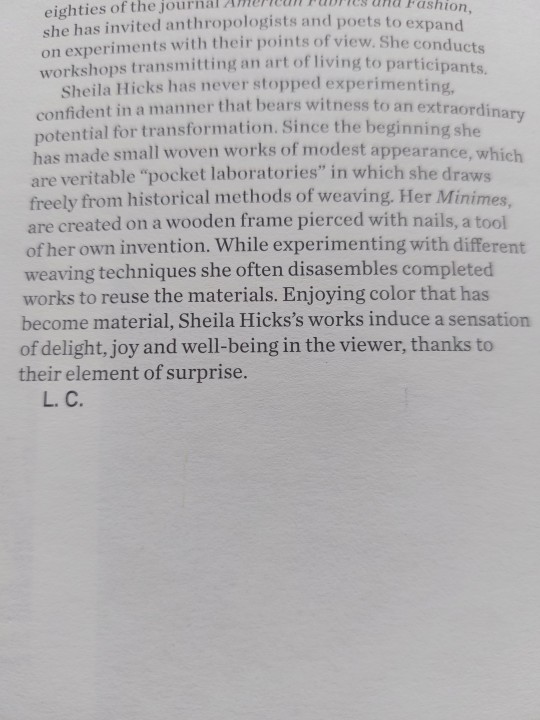
After choosing to focus on the artist Sheila Hicks, I went to the library and found a book about a variety of artists including Sheila Hicks.
Reading the book, I learnt a lot about Hicks, her life as well as her techniques and materials she works with.
She studied Art in Yale School of Art and Architecture, where she discovered the ancient art of weaving in South America. She receieved a scholarship from here to paint and complete her training in Chile.
She refined her knowledge of Latin American archeological sites and textile traditions when visiting countries like Venezuela, Colombia, Ecuador, Peru, Bolivia, Argentina, Uruguay and Brazil.
She made use of her discoveries in a thesis on the pre-Columbian textile art of the Andean region.
'Unconcerned about blurring the borders between fine arts, design, crafts or architecture, she avoids precisely defining the nature of her works, which she likes to call "unbiased weaves"'
0 notes
Text
The agricultural techniques of pre-Hispanic origin such as the so called waru-waruor or ridges of furrows, the amazing terraces that are to be found in different islands of the lake and the totora reed "floating islands" in the middle of the lake are expressions of remarkable value and evidence of land-use and environmental management.
Languages, customs, beliefs and artistic works that remain until our days are evidence of ways of life and of cultural values of exceptional value that characterized the Uru inhabitants of the lake and the Taquilenos from Taquile Island, who are organized in a very strong community and whose textile art is one of the fundamental expressions that has been influenced by the textile art of the ancient Paracas, Nazca, Wari and above all, the Collas, a group of people from the pre-Hispanic Peruvian Andean highland.
Languages, traditions, beliefs and customs are intermingled in different forms of social organization, cycles of social life, feasts and rituals, music and dances and in the preservation of sacred places, being the lake the most sacred one, since from its waters emerged the founders of the Inca civilization and the Empire.
instagram
0 notes
Text
Investigating Peruvian silver jewellery beauty and elegance
These accessories have a timeless charm that appeals to people all around the world. They are often adorned with vibrant gemstones or take influence from native patterns. It pays tribute to the essence of Peru's handcrafted history while displaying elegance and sincerity. Peruvian silver jewellery embodies the country's remarkable craftsmanship and rich cultural background, captivating onlookers with its unique blend of elegance and history. Jewellery made of Peruvian silver can be offered as a precious gift or worn as a spectacular item. Each piece, expertly created from sterling silver, highlights the breathtaking scenery and rich cultural past of the country. The eye-catching geometric motifs and delicate filigree patterns of Peruvian silver jewellery showcase the creativity and genius of its artisans.
Peruvian jewellery is a captivating representation of the nation's artisanal legacy and rich cultural tapestry. Each piece, created with care and love by talented artisans, conveys a legacy of creativity, tradition, and workmanship that has been passed down through the ages. and sterling silver, which are among the native materials used in Peruvian jewellery. Every item radiates authenticity and charm, from delicately made silver earrings inspired by ancient Incan themes to brilliant beaded necklaces showcasing the rich traditions of Peru's indigenous villages.

Jewellery from Peru offers a distinctive and alluring reflection of the nation's cultural identity and artistic past, whether you're drawn to the bright and vivid motifs or the delicate nuances of filigree. Wearers of Peruvian jewellery connect with the spirit of Peru with each piece they wear, not only adorning themselves with beauty but also serving as ambassadors of a rich and storied legacy

Peruvian earrings perfectly capture the spirit of the country's vibrant culture and creative flare. These earrings, which are expertly crafted by artists with great attention to detail, frequently include elaborate designs that are influenced by local motifs and customs. Each pair features intricate metal work reminiscent of old Incan artwork and vivid textile designs that narrate a tale of tradition and skillfully crafted objects that have been passed down through the years. Handcrafted with materials gathered from Peru's varied landscapes, including colourful gemstones, vivid fabrics, and sterling silver, Peruvian earrings provide a singular and alluring representation of the nation's cultural identity. Wearing Peruvian earrings is a great way to honour the country's colourful culture and rich artistic heritage in addition to just accessorising.
More than just an adornment, a handcrafted necklace from Peru is evidence of the nation's rich artistic traditions and cultural legacy. Elaborately created by gifted craftspeople, every necklace is a unique piece of art, including elaborate patterns influenced by the varied topography and native societies of Peru. These necklaces frequently feature an array of locally found materials, including colourful gemstones, sterling silver, traditional Andean textiles, and excellent metalwork, ranging from vivid textile patterns to exquisite metal work. Because of their exceptional inventiveness and skill, each piece reflects the distinct character of Peru's artisan villages. Peruvian Hand Crafted Necklace are exquisite and profound representations of Peru's colourful personality and artistic past, whether worn as a statement piece or as a treasured gift.
0 notes
Text
SHEILA HICKS
“She is known for her innovative and experimental weavings and sculptural textile art that incorporate distinctive colors, natural materials, and personal narratives.”

“I have no prejudices about materials; the more pliable they are, and the more adaptable they are, the more I am attracted to them.”

“Something like this is almost like a living object because every single time that it is put on display it’s going to be very different,” says Cherith Zanghi, Annual Giving Assistant. “I’m thinking about how this was picked up by someone and put here and then arranged, and they had to think really hard about how they wanted it to be seen.” Peluca verde, whose title translates to “green wig,”
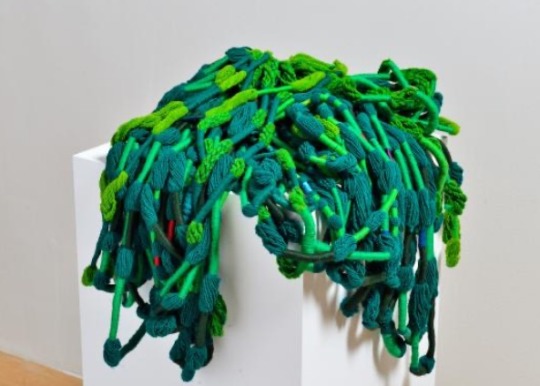
Upon completing her undergraduate degree in 1957, Hicks received a Fulbright grant to study ancient Andean weaving in Chile, using the funds to travel across the continent and explore its rich artistic traditions.
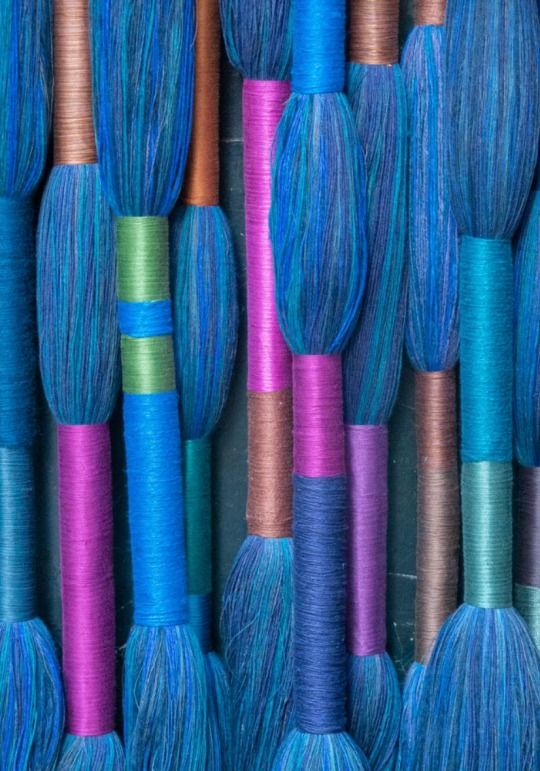
Hicks continues employing intensely saturated color and the raw materials of textiles—wool, synthetic thread, linen flax—in works that are rigorously constructed by wrapping, piling, and weaving her materials. “I don’t want to go do something I know how to do. I want to go do something I don’t know how to do,” she has said. “I don’t want a legacy. I just want to have fun while I’m here.”

“I don’t want to go do
something I know
how to do. I want to
go do something I
don’t know how to do.”
Sheila Hicks
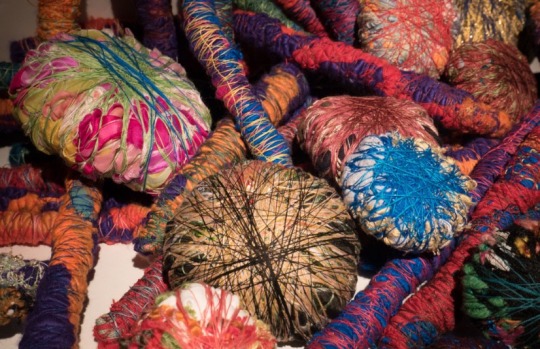
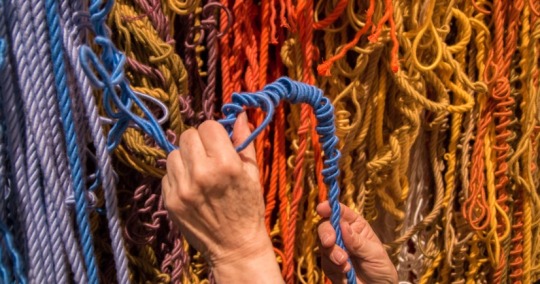
0 notes
Text
Pamper Your Soul: Unveiling the Divine Bliss of the Goddess Spa Package in Cusco
In the heart of the enchanting city of Cusco lies a sanctuary of serenity and rejuvenation – the Goddess Spa. Nestled amidst the ancient beauty of this Peruvian gem, the spa beckons you to embark on a journey of divine pampering with its exclusive Goddess Spa Package.
Picture this: a haven where time seems to stand still, and the pressures of the world melt away. The Goddess Spa Package offers a unique blend of traditional Andean wellness practices and modern spa luxuries, promising an experience that transcends the ordinary.
Upon entering the spa, you are greeted by the soothing aroma of indigenous herbs and essential oils, setting the stage for a sensory adventure. The Goddess Spa Package begins with a sacred cleansing ritual, inspired by ancient Incan traditions. This ceremonial start lays the foundation for a truly transformative experience.
The highlight of the package is the "Goddess Harmony Massage," a bespoke treatment that combines therapeutic techniques with a spiritual touch. Highly skilled therapists, well-versed in the healing arts, use organic oils infused with local botanicals to release tension and restore balance to mind, body, and spirit. As the rhythmic strokes transport you to a state of deep relaxation, you'll feel a profound connection to the mystical energy of Cusco.
Following the massage, the journey continues with a revitalizing facial using Andean ingredients renowned for their skin-nourishing properties. The "Goddess Glow Facial" leaves your skin radiant and refreshed, reflecting the vibrant energy of the Andes.
The experience concludes with a tranquil meditation session in a specially designed space adorned with traditional Andean textiles and artifacts. Guided by the gentle whispers of a seasoned meditation guide, you'll find inner peace and a renewed sense of self.
As you emerge from the Goddess Spa, you'll carry with you not only a rejuvenated body but also a revived spirit. The Goddess Spa Package in Cusco is more than a mere pampering session; it's an odyssey of self-discovery and a celebration of the ancient wisdom that permeates this sacred land.
Indulge in the divine bliss of the Goddess Spa Package, and let the magic of Cusco weave its transformative spell on your body and soul. Your journey to holistic well-being begins here, where the ancient and the contemporary converge to create an unparalleled spa experience.
0 notes
Text

Native Woman Wearing Andean Textiles: Art by Lorenzo Da Silva
#Lorenzo Da Silva#Andean woman#Andean women depicted in art#native south american#cholita bowler hat#Andina#andean textiles#andean textiles depicted in art#ndn tumblr#native american#Andean indigenous#women depicted in art#indigenous women depicted in art#indigenous to south america#south american#indigenous south american#art#painting
10 notes
·
View notes
Text
Experiencing Authentic Peruvian Cuisine at La Furia Chalaca: A Culinary Journey
Peruvian cuisine is a vibrant tapestry of flavors, colors, and textures, reflecting the diverse cultural heritage of this South American nation. For those seeking an authentic taste of Peru, a visit to La Furia Chalaca is a culinary adventure not to be missed. Nestled in the heart of [City], this renowned Peruvian restaurant has been delighting diners with its traditional dishes and warm hospitality. Join us on a gastronomic journey as we explore the rich flavors and cultural significance of Peruvian cuisine at La Furia Chalaca.

A Taste of Tradition
Traditional Peruvian Cuisine every dish is a testament to the deep-rooted culinary heritage of Peru. From the moment you step inside, you're transported to a world where ancient traditions and modern techniques converge to create an unforgettable dining experience.
Ceviche: The Jewel of Peruvian Cuisine
No visit to La Furia Chalaca is complete without indulging in their exquisite ceviche. This iconic Peruvian dish, made from fresh fish or seafood marinated in zesty lime juice, is a celebration of Peru's coastal bounty. The culinary team at La Furia Chalaca masterfully balances the acidity of the lime with the subtle heat of aji peppers, resulting in a harmonious burst of flavors that dance on your palate.
Lomo Saltado: Where East Meets West
Another gem in the crown of Peruvian cuisine is Lomo Saltado, a delectable stir-fry that marries the bold flavors of China with the robust tastes of Peru. At La Furia Chalaca, tender strips of beef are wok-tossed with vibrant vegetables, Peruvian spices, and a hint of soy sauce, creating a dish that's a testament to the fusion of cultures that defines Peru's culinary landscape.
Papa a la Huancaina: A Creamy Delight
For those seeking a taste of comfort and indulgence, La Furia Chalaca's Papa a la Huancaina is a must-try. This dish features boiled potatoes smothered in a creamy, spicy cheese sauce, topped with a perfectly boiled egg. The creamy, slightly spicy Huancaina sauce is a testament to the complex flavors that Peruvian cuisine is known for.
A Culinary Journey through Peru
La Furia Chalaca takes pride in offering a comprehensive menu that showcases the diverse regional cuisines of Peru. From the coastal delicacies of ceviche to the hearty Andean stews, every dish is a carefully crafted masterpiece. Whether you're savoring the spicy flavors of Arequipa or the robust, earthy tastes of the Amazonian rainforest, each bite tells a story of Peru's vast culinary landscape.
Warm Hospitality, Authentic Ambiance
Beyond the extraordinary cuisine, La Furia Chalaca's warm and inviting ambiance is an essential part of the dining experience. The décor, inspired by Peruvian folk art and traditional textiles, creates an atmosphere that transports you to the heart of Peru. The attentive and knowledgeable staff are passionate about sharing the stories behind each dish, adding an extra layer of authenticity to your dining experience.
A Feast for the Senses
A visit to Peruvian Restaurants is more than just a meal; it's a journey through the soul of Peru. With each dish, you'll taste the centuries of culinary innovation and the vibrant cultural mosaic that defines Peruvian cuisine. So, if you're in search of an authentic Peruvian dining experience, let La Furia Chalaca be your guide on this unforgettable gastronomic adventure. Come, savor the flavors of Peru, and leave with a heart full of memories.
0 notes
Text
Two ancient cultures of the Andes: the Wari and the Tiwanaku. Headwear, including hats, played an important role in Wari society.
by Alejandro A Mendoza
Flourished in the Andean region of South America, specifically in what is now modern-day Peru, Bolivia, and parts of Chile between 500 and 1000 CE. Both cultures made significant contributions to the development of the Andean civilization and left behind impressive architectural remains and artistic artifacts.
The Wari civilization was centered in the highlands of present-day Peru, particularly around the city of Ayacucho. It was one of the earliest centralized states in the Andean region and reached its height of power and influence between 600 and 1000 CE. The Wari people were known for their extensive road networks, advanced agricultural techniques, and impressive urban planning.
In terms of art and craftsmanship, the Wari culture produced remarkable textiles, ceramics, and metalwork. They were skilled weavers, creating intricate textiles using a variety of techniques. Some of the textiles featured geometric patterns, animal motifs, and human figures. The Wari people were also known for their finely crafted pottery and exquisite gold and silver jewelry.
The elite members of the society often wore distinctive headdresses adorned with feathers, textiles, and precious metals. These headpieces were a symbol of social status and power and were likely used during ceremonial occasions or important events.
The Tiwanaku civilization, also known as the Tiahuanaco, was centered near Lake Titicaca in modern-day Bolivia. It thrived between 300 and 1000 CE, preceding and overlapping with the Wari civilization. Tiwanaku is renowned for its monumental architecture, advanced agricultural practices, and religious beliefs.
The Tiwanaku people constructed impressive stone structures, such as temples, palaces, and monolithic gateways. These structures showcased their architectural prowess and religious symbolism. The Gateway of the Sun, a large stone sculpture depicting intricate carvings of human and supernatural figures, is one of the most famous examples of Tiwanaku art.
In terms of headwear, the Tiwanaku culture is known for its distinctive and elaborate headdresses. These headdresses often featured feathered ornamentation and intricate textile patterns. They were associated with religious and ceremonial practices and were likely worn by the ruling elite or high-ranking priests.
#edisonmariotti Edison Mariotti Edison Mariotti
link: https://shre.ink/9Dzp
.br
Duas culturas antigas dos Andes: os Wari e os Tiwanaku. Os acessórios para a cabeça, incluindo chapéus, desempenhavam um papel importante na sociedade Wari.
Floresceu na região andina da América do Sul, especificamente no que hoje é o atual Peru, Bolívia e partes do Chile entre 500 e 1000 EC. Ambas as culturas fizeram contribuições significativas para o desenvolvimento da civilização andina e deixaram impressionantes vestígios arquitetônicos e artefatos artísticos.
A civilização Wari estava centrada nas terras altas do atual Peru, particularmente ao redor da cidade de Ayacucho. Foi um dos primeiros estados centralizados na região andina e atingiu seu auge de poder e influência entre 600 e 1000 EC. O povo Wari era conhecido por suas extensas redes rodoviárias, técnicas agrícolas avançadas e planejamento urbano impressionante.
Em termos de arte e artesanato, a cultura Wari produziu tecidos, cerâmicas e trabalhos em metal notáveis. Eles eram tecelões habilidosos, criando tecidos intrincados usando uma variedade de técnicas. Alguns dos tecidos apresentavam padrões geométricos, motivos de animais e figuras humanas. O povo Wari também era conhecido por sua cerâmica finamente trabalhada e joias requintadas de ouro e prata.
Os membros da elite da sociedade costumavam usar cocares distintos adornados com penas, tecidos e metais preciosos. Esses capacetes eram um símbolo de status social e poder e provavelmente eram usados durante ocasiões cerimoniais ou eventos importantes.
A civilização Tiwanaku, também conhecida como Tiahuanaco, estava centrada perto do Lago Titicaca, na atual Bolívia. Ele prosperou entre 300 e 1000 EC, precedendo e se sobrepondo à civilização Wari. Tiwanaku é conhecida por sua arquitetura monumental, práticas agrícolas avançadas e crenças religiosas.
O povo Tiwanaku construiu impressionantes estruturas de pedra, como templos, palácios e portais monolíticos. Essas estruturas exibiam suas proezas arquitetônicas e simbolismo religioso. O Portal do Sol, uma grande escultura de pedra representando esculturas intrincadas de figuras humanas e sobrenaturais, é um dos exemplos mais famosos da arte de Tiwanaku.
Em termos de chapelaria, a cultura Tiwanaku é conhecida por seus distintivos e elaborados cocares. Esses cocares geralmente apresentavam ornamentação de penas e padrões têxteis intrincados. Eles estavam associados a práticas religiosas e cerimoniais e provavelmente eram usados pela elite dominante ou por sacerdotes de alto escalão. @edisonblog

1 note
·
View note